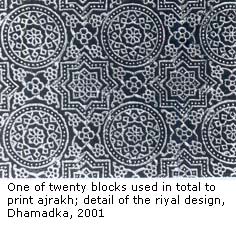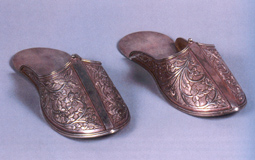
Art history/ Historiography, Crafts, Handlooms, Art, Craftspersons/ Artisanal
The Work of the Khatris of Dhamadka: Block-Printed and Resist -Dyed Textiles
Edwards, Eiluned
December, 2004
The Khatris are a caste of fabric printers and dyers who live chiefly in the states of Gujarat and Rajasthan in north-west India. There are also communities in the adjoining province of Sindh which was ceded to Pakistan after the Partition of India in 1947. The greatest concentration of Khatris is to be found in Kachchh district in the extreme west of Gujarat where they settled after migrating from Sindh about 400 years ago. The district is famous for the variety and quality of its textiles. The ex-pertise of the Khatris who make resist-dyed fabrics using a wax resist (batik), or a tied resist (bandhani), and print cottons by hand with engraved-wooden blocks, has helped to establish Kachchh as a major centre for handmade textiles. While the craft skills of the Khatri caste as a whole are well-known throughout India, one community in particular has achieved international renown: the village of Dhamadka in the north-east of Kachchh. The Khatris of Dhamadka are famous for the production of high quality block-printed and resist-dyed textiles. In the last three decades they have also become known for their expertise in the use of natural dyes, thanks largely to the efforts of a single family, that of the late Khatri Mohammad Siddik. Today, handmade textiles from Dhamadka, dyed and printed with natural colours are sold worldwide and are represented in museum collections across the globe.
| ... |
This is a preview. To access all the essays on the Global InCH Journal a modest subscription cost is being levied to cover costs of hosting, editing, peer reviewing etc. To subscribe, Click Here.
ALSO SEE
The Contribution of the Decorative Arts Departm...
Pathak, Anamika
The Tradition of Foot Covering in Indian Cultur...
Pathak, Anamika



